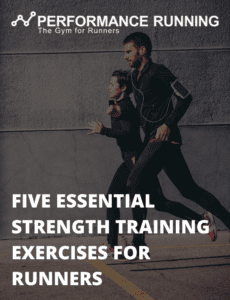
By David Nogle, I.S.S.A. Certified Personal Trainer, I.S.S.A. Certified Nutrition Coach, Runner
What is Sciatica?
Sciatica is becoming more and more common. According to the National Institute of Health, back pain is 3.9% more common than 13 years ago. 3 million cases occur in the United States per year, it’s usually self diagnosable and a well recognized issue, and has a lot of information available. Sciatica is often very painful, described in several ways- as listed below.

While it is well known that sciatica is often extremely painful, it is often overlooked in terms of consistency. It is generally a relentless issue.

The most common reason for this pain is inflammation of a disc in the spine, usually near or at the L4 vertebrae, which is in the lower back. Sciatic nerve pain can also stem from issues/inflammation in the joints of the spine and/or muscles in the pelvis.
With this information, it becomes odd that we would be seeing more back problems as society progresses in this field and we learn more about it. This is believed to be due to humans having a higher life expectancy. Therefore, it is unlikely we will see any less of this issue, however, we can learn how to mitigate the issue with a few pain relief exercises.
A Word on Mental Health in Sciatica
This is an issue that shouldn’t be overlooked. There have not only been extensive issues physically, but given the high level of pain in sciatica, mental health is often an issue in this frustrating issue, especially long term. I’ve personally seen this not just in celebrity heroes I’ve had, but with my parents first hand (my father being an extreme case of degenerative disc disease, with signs of discs degenerating as early as 18-20 years old, paralyzing back pain by mid twenties, near paralysis around 40, and eventual surgery to remove one disc-with an attempt to leave some cartilage as cushion, and shave others to reduce symptoms of bulging). Mental health is often heavily connected and a very common issue in this problem. This article alludes to some of the most common issues.
https://www.ncbi.nlm.nih.gov/pmc/articles/PMC1615112/
https://www.iasp-pain.org/resources/fact-sheets/psychology-of-back-pain/
Know you’re not alone. If you have any sort of long term frustration and see it hurt your mental health, due to injury or any reason, never be afraid to reach out.
If you or someone you know is contemplating self harm, do not hesitate to call the Suicide Prevention Hotline: Dial 988
Some Ways to Reduce this Physical Pain
After combing through textbooks and articles, you’ll find countless ways to target this area. Here are 5 good ways to target this area and supporting muscles.
The most obvious and perhaps the most beneficial movement is simply a moderate amount of walking. Start light, and increase load.
The Dead Hang is a movement done simply by hanging your weight by a bar. If back pain is very prominent, it is suggested to this with your feet on the ground. You’ll get the same effect just by taking the weight off of your knee/feet. As usual, make sure to keep your core engaged.
Cat dogs are best demonstrated in this 90 second video.
https://www.youtube.com/watch?v=ciGWyFEVAcY
Cobras involved laying flat on the ground, and pushing your torso up to arch your back into a bit of a stretch. This is not to be confused with a push up.
Planks are one final exercise that is common to support lower back muscles. Make sure to keep the body in a straight line if possible, and keep the core engaged. Here are a couple variations:
Here are some useful resources for continued education on sciatica that I found useful:
https://www.youtube.com/watch?v=CHLm-u_p954
https://www.ncbi.nlm.nih.gov/pmc/articles/PMC4339077/
Photo by Towfiqu barbhuiya, obtained via Pexels.com




Recent Comments